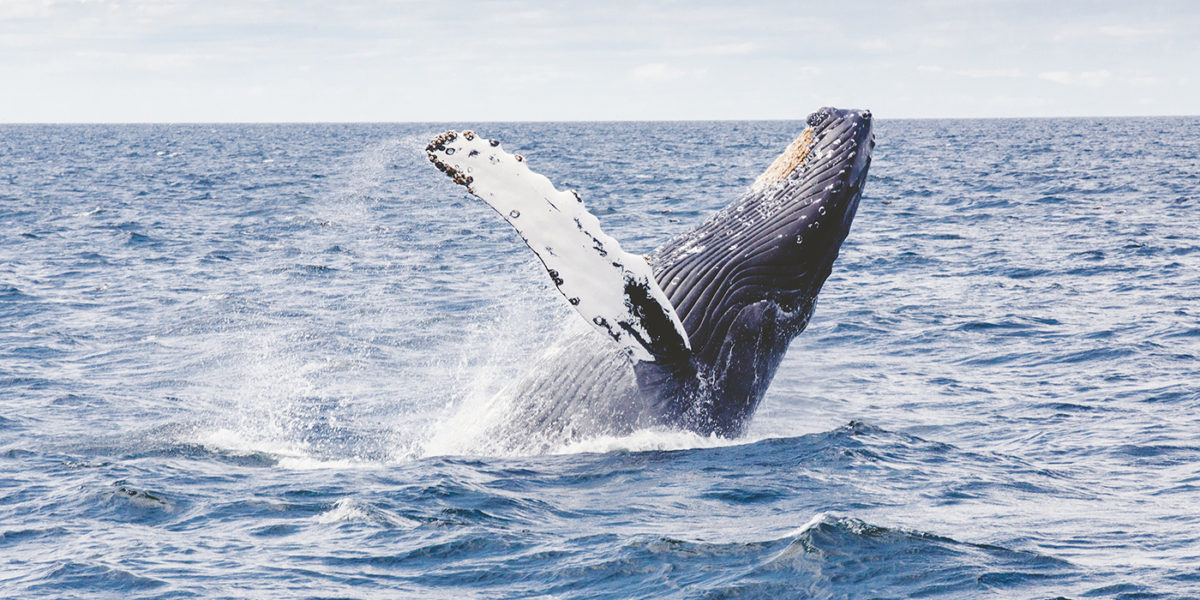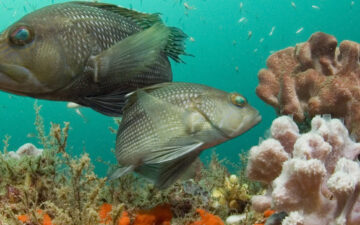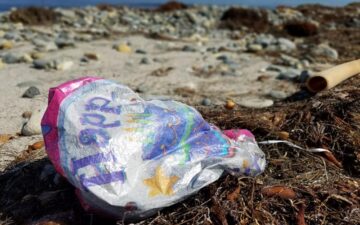The ocean has a secret.
I am very lucky to work in the field of ocean health. I grew up in a coastal English village, and spent a lot of time looking at the sea, wondering at its secrets. Now I’m working to preserve them.
The ocean, as we know, is critical to all oxygen-dependent life, you and me included! But life is also critical to the ocean. The ocean produces so much oxygen because of ocean plants. These plants draw down carbon dioxide (CO2), a greenhouse gas, and convert it to carbon-based sugars and oxygen. They are climate change heroes! There is now wide recognition of the role of ocean life in slowing climate change, there’s even a term: blue carbon. But there is a secret… Ocean plants can only draw down as much CO2 as they do, and oceans can only store as much carbon as they do, because of ocean animals.
In April, on the Pacific island of Tonga, I had the opportunity to present this secret at the “Whales in a Changing Ocean” conference. In many Pacific Islands, whales support booming tourism economies, and are culturally important. While we are rightly concerned about the impacts of climate change on whales, we also need to recognize that whales can be a great, big ally in fighting climate change! Through their deep dives, vast migrations, long life spans, and large bodies, whales have an enormous role in this ocean secret.

The world’s first international “whale poo diplomats” in Tonga, advancing the value of healthy whale populations in mitigating global climate change. L-R: Phil Kline, The Ocean Foundation, Angela Martin, Blue Climate Solutions, Steven Lutz, GRID-Arendal.
Whales both enable ocean plants to draw down CO2, and also help to store carbon in the ocean. Firstly, they provide essential nutrients that enable ocean plants to grow. Whale poop is a fertilizer, bringing nutrients from the depths, where whales feed, to the surface, where plants need these nutrients to photosynthesis. Migratory whales also bring nutrients with them from highly-productive feeding grounds, and release them in the nutrient-poor waters of whales’ breeding grounds, boosting the growth of ocean plants across the ocean.
Secondly, whales keep the carbon locked in the ocean, out of the atmosphere, where it could otherwise contribute to climate change. Tiny ocean plants produce carbon-based sugars, but have a very short lifespan, so they can’t store the carbon. When they die, a lot of this carbon is released in surface waters, and can be converted back to CO2. Whales, on the other hand, can live for over a century, feeding on food chains that begin with the sugars in these tiny plants, and accumulating the carbon in their huge bodies. When whales die, deep ocean life feeds on their remains, and the carbon formerly stored in whales’ bodies can enter sediments. When carbon reaches deep ocean sediment, it is effectively locked away, and therefore unable to drive climate change. This carbon is unlikely to return as CO2 in the atmosphere, potentially for millennia.

Can protecting whales be part of the solution to climate change? Photo: Sylke Rohrlach, Flickr
Since Pacific Islands contribute a tiny fraction to greenhouse gas emissions that drive climate change – less than half of 1%, for Pacific Island Governments, securing the well-being and contribution to the ecosystem that whales provide as a carbon sink is a practical action that can help to address the threat of climate change to Pacific island people, culture and land. Some now see an opportunity to include conservation of whales in their contributions to the United Nations Framework Convention on Climate Change (UNFCCC), and support achievement of the UN Sustainable Development Goals (SDGs), both for ocean resources (SDG 14), and for action on climate change (SDG 13).

Humpback whales in Tonga face threats from climate change, but can also help to reduce the impacts of climate change. Photo: Roderick Eime, Flickr
Several Pacific Island Countries are already leaders in whale conservation, having declared whale sanctuaries in their waters. Every year, enormous humpback whales socialize, breed, and give birth in Pacific Island waters. These whales use migratory routes through the high seas, where they are not protected, to get to their feeding grounds in Antarctica. Here they may compete for their primary food source, krill, with fishing vessels. Antarctic krill is mainly used in animal feed (aquaculture, livestock, pets) and for fish bait.
With the UN this week hosting the first Ocean Conference on SDG 14, and the UN process of developing a legal agreement on biodiversity in the high seas ongoing, I look forward to supporting Pacific Islands to achieve their objectives to recognize, understand, and secure the role of whales in climate change mitigation. The benefits of this leadership for both whales and Pacific Islanders will extend to human and ocean life globally.
But the ocean secret goes much deeper. It’s not just whales!
More and more research is linking ocean life to the carbon capture and storage processes that are essential to the ocean carbon sink, and for life on land to cope with climate change. Fish, turtles, sharks, even crabs! All have roles in this intricately connected, little-known ocean secret. We’ve barely scratched the surface.

Eight mechanisms through which ocean animals support the ocean carbon pump. Diagram from the Fish Carbon report (Lutz and Martin 2014).
Angela Martin, Project Lead, Blue Climate Solutions
The writer would like to acknowledge Fonds Pacifique and the Curtis and Edith Munson Foundation for enabling production of the report on Pacific island whales and climate change, and, along with the GEF/UNEP Blue Forests Project, supporting attendance at the Whales in a Changing Ocean conference.
Useful links:
Lutz, S.; Martin, A. Fish Carbon: Exploring Marine Vertebrate Carbon Services. 2014. GRID-Arendal
Martin, A; Barefoot N. Whales in A Changing Climate. 2017. SPREP
www.bluecsolutions.org







